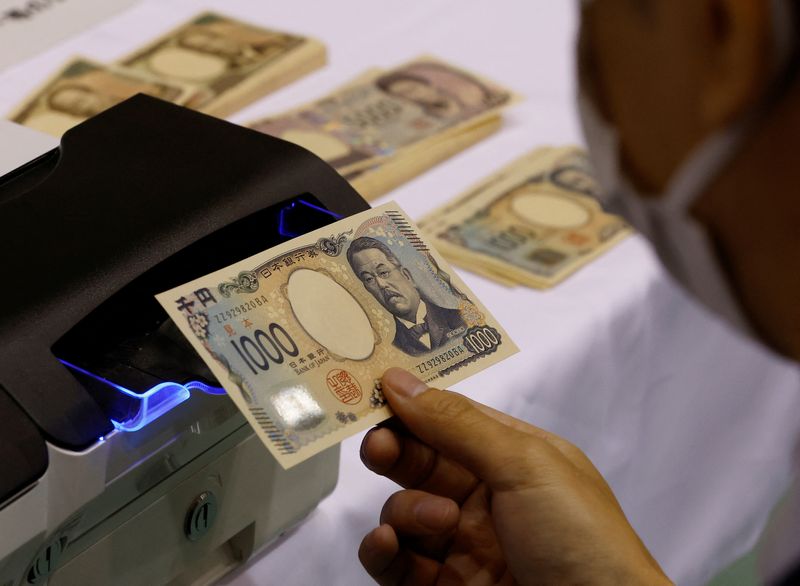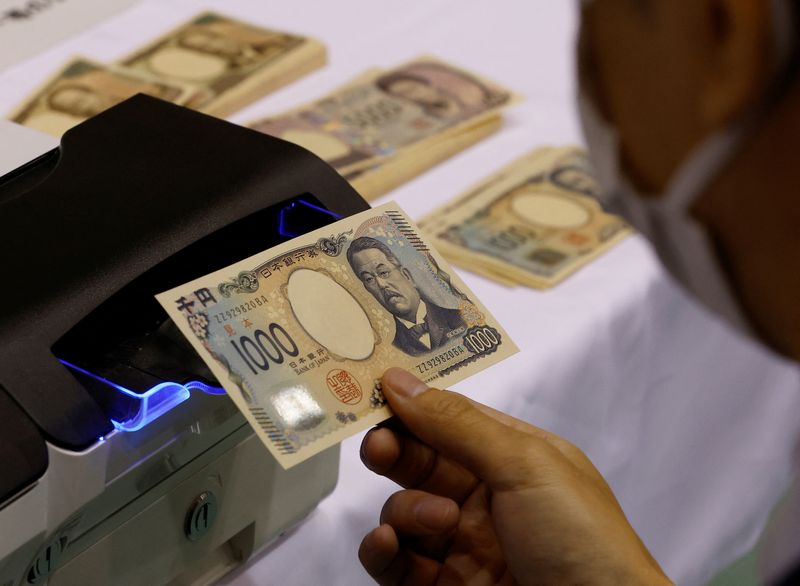Forex
Japan repeats verbal warning to yen bears, BOJ keeps dovish tone

By Leika Kihara and Kentaro Sugiyama
TOKYO (Reuters) -Japanese Prime Minister Fumio Kishida said on Thursday the government will not rule out any options in addressing excessive moves in the currency market, stressing Tokyo’s resolve to step into the market if it sees the yen’s fall as overdone.
“It’s important for currency rates to move stably reflecting economic fundamentals,” Kishida told a news conference, when asked about the yen’s recent slide to three-decade lows.
“We will monitor currency moves with a high sense of urgency, and respond appropriately without ruling out any options to deal with excessive currency moves,” he said.
His remarks echoed those by Japan’s top currency diplomat Masato Kanda on Wednesday, when the yen hit a 34-year low against the dollar on expectations the Bank of Japan will go slow in raising interest rates, thereby maintaining the huge gap between Japanese and U.S. rates.
On Wednesday the dollar briefly hit 151.975 yen, exceeding the 151.94 level at which Japanese authorities stepped in during October 2022 to buy the currency.
On Thursday it lost some ground to stand at 151.370 yen.
The yen’s sharp declines come despite the BOJ’s decision last week to end eight years of negative interest rates, as traders focused more on its dovish message suggesting that another rate hike will be some time off.
Upon ending negative rates, many BOJ policymakers saw the need to go slow in phasing out ultra-loose monetary policy, a summary of opinions at last week’s meeting showed on Thursday.
“With the yen weakening to a fresh 34-year low against the dollar, the Ministry of Finance signalled that an intervention in the foreign exchange markets is imminent,” said Marcel Thieliant, head of Asia-Pacific at Capital Economics.
“However, the yen will certainly not get much support from Japan’s monetary policymakers as inflation is more likely to undershoot than to overshoot the Bank of Japan’s forecasts.”
Data due out on Friday is likely to show annual core inflation in Japan’s capital, which is considered a leading indicator of nationwide trends, slowed to 2.4% in March after a 2.5% gain in February, according to a Reuters poll.

Japanese policymakers have historically favoured a weak yen as it helps boost profits at the country’s big manufacturers.
But the yen’s sharp declines have recently added to headaches for Tokyo by inflating the cost of raw material imports, hurting consumption and retail profits.

 Forex3 years ago
Forex3 years agoForex Today: the dollar is gaining strength amid gloomy sentiment at the start of the Fed’s week

 Forex3 years ago
Forex3 years agoUnbiased review of Pocket Option broker

 Forex3 years ago
Forex3 years agoDollar to pound sterling exchange rate today: Pound plummeted to its lowest since 1985

 Forex3 years ago
Forex3 years agoHow is the Australian dollar doing today?

 Cryptocurrency3 years ago
Cryptocurrency3 years agoWhat happened in the crypto market – current events today

 World3 years ago
World3 years agoWhy are modern video games an art form?

 Commodities3 years ago
Commodities3 years agoCopper continues to fall in price on expectations of lower demand in China

 Economy3 years ago
Economy3 years agoCrude oil tankers double in price due to EU anti-Russian sanctions





















